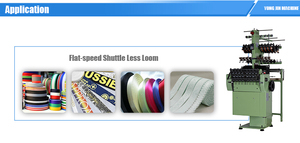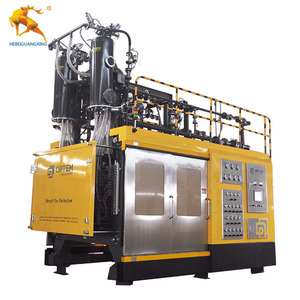
All categories
Featured selections
Trade Assurance
Buyer Central
Help Center
Get the app
Become a supplier

(11474 products available)


























A mattress-making machine refers to a series of machines or automated devices used in the manufacturing of mattresses. Here are some of the major types:
Mattress-Padding Machines
These create the cushioning or padding layer of the mattress, which is made of foam, fiber, or other materials. The machines cut, spread, and bond the padding materials to form the desired padding layer. Sometimes, they quilt the padding material to add particular designs or textures.
Mattress-Coil Machines
These machines produce the innerspring or coil unit of the mattress. They involve the coiling of steel wire into specific coil shapes and then manufacturing these coils into a network or unit. Some may combine the process with computer-aided design to ensure the coils meet the precise specifications.
Mattress-Making Machines
These automate the process of assembling the various mattress components. For instance, the machine may apply adhesive materials to hold different layers of the mattress together. It may also oversee the cutting of the outer fabric to the right sizes, followed by the sewing of the borders or strips onto the cut fabric.
Quilting Machines
These machines create the quilted top layer of the mattress. They stitch together the top fabric, padding, and foam layers to create a quilted pattern. Electronics and sophisticated control systems usually govern these machines to ensure precise and uniform quilting.
Border-Making Machines
These manufacture the borders of the mattress. The borders go around the sides of the mattress and offer support to the structure. They also aesthetic components that can be sewn or attached to the mattress fabric. Some designs come with handles or vents incorporated in the borders.
Mattress-Packaging MachinesThese machines package finished mattresses for storage or shipment. They may use techniques like vacuum-sealing or roll-packing to reduce the size of the mattress for easier transportation.
The specifications of a mattress-making machine vary depending on the type and model. Here are key specifications corresponding with the types of mattress machines.
Production capacity
It is the number of mattresses made in a particular time. It varies depending on the machine type. Automatic production machines have high capacities, ranging from several hundred to several thousand pieces in an eight-hour shift. Depending on the setup and complexity, semi-automatic may produce several dozen to several hundred pieces in an eight-hour shift. Manual production machines have low capacities, ranging from a few dozen to a hundred pieces in an eight-hour shift.
Mattress types
Some machines are designed to make spring mattresses, while others make foam mattresses. Multif mattress-making machines also make different types of mattresses.
Sizes
Mattress machines can make mattresses of different sizes according to standard sizing or custom dimensions. They include twin, full, queen, king, California king, and custom sizes.
Mattress components
Some mattress machines assemble the mattress components only. These components include mattress covers, foams, mattress spring coils, and other materials. Others stitch or tape them together.
Automation features
Some mattress-making machines are fully automatic, while others are semi-automatic or entirely manual. The automated features include coil winding, border tape sewing, quilting, and foam cutting.
Power requirements
Mattress-making modes require different power capacities. Moreover, some machines are electric, and others are pneumatic or hydraulic. Electric machines operate on AC or DC power, while pneumatic models use compressed air, and hydraulic ones use hydraulic power.
The maintenance of a mattress-making machine varies depending on type. Here are some general maintenance tips.
The development of the mattress machine has made significant contributions to public production and living standards, and its application scenarios are widespread.
Mattress manufacturing plants
As the principal place for mattress production, manufacturing plants utilize mattress machines to create various kinds of mattresses in excessive quantities. These factories may have multiple units of mattress machines, which allows for large-scale production. The efficiency of such machines aids factories in meeting market demand.
Moreover, the diversity of mattress machines means that manufacturing plants can produce different styles and specifications of mattresses, such as spring mattresses, latex mattresses, etc., to meet the requirements of different customers.
Mattress production workshops
Unlike large manufacturing plants, production workshops may be relatively small, but they still utilize mattress machines for production. These workshops are probably more flexible and can produce customized mattresses according to individual customers' needs.
Furniture factories
Besides mattresses, furniture factories also produce other furniture, such as beds, sofas, etc. Furniture factories may be integrated with mattress machines for production, thereby ensuring the consistency and coordination of the entire furniture.
Furthermore, some furniture factories may specialize in making soft furniture, such as sofa mattresses. These, too, will require specific types of mattress machines.
Rental companies
These companies often need to produce a large number of mattresses quickly to meet the temporary demands of their customers. Furthermore, rental companies usually require more cost-effective and durable mattresses, which increases the importance of mattress machines in their production.
In addition, rental companies may produce various types of mattresses according to different activities and applications, such as air mattresses for camping or portable mattresses for exhibition rental, etc. Therefore, rental companies need to select and equip suitable mattress machines to meet their specific production needs.
Consider the following factors when purchasing a mattress manufacturing machine:
Production line components
Understanding the components of the production line will aid in the assessment of each production link. A complete mattress production line comprises multiple machines to meet diverse requirements. These include fabric cutting machines, foam cutting machines, spring assembly machines, quilting machines, mattress edge sealing machines, packaging machines, and more. Each machine plays a critical role in the production process, and selecting a suitable combination of machines will improve production efficiency and product quality.
Automation and intelligent level
Automation and intelligent levels can significantly impact production efficiency and operating costs. When selecting, it is critical to evaluate the automation and intelligent features of each machine, such as automatic feeding, cutting, sewing, shaping, and other functions, as well as their control system's ease of use and reliability. Choosing highly automated and intelligent machines can reduce manual intervention, streamline production processes, and facilitate production management and monitoring.
Production capacity and flexibility
Consider the production capacity and flexibility of the machine to meet changing production demands. Evaluate the machine's rated output, task handling capacity, and adjustable range. Furthermore, examine the machine's adaptability to various types and sizes of mattresses. Its adjustable parameters and interchangeable components will allow it to quickly respond to market demand and production requirements.
Machine quality and after-sales service
It is critical to ensure that the mattress production machine is of high quality, with dependable performance, stable operation, and long-lasting use. Furthermore, excellent after-sales support will ensure that the production line runs smoothly. Investigate the machine manufacturer's brand reputation, product quality evaluation, and after-sales service network. Select a vendor that provides dependable quality and extensive support services.
Q1 Which kind of foam can the automatic mattress-making machine make?
A1 An intelligent automatic mattress manufacturing machine can be used to produce various types of foam, such as memory foam, latex foam, PU foam, hydrogenated foam, and others.
Q2 How does the Automatic foam mattress-making machine work?
A2 When the operator inserts the mattress size into the automatic foam-making machine, the machine will cut and layer the foam according to the desired configuration. The foam layers will then be bonded together using an adhesive spray.
The assembled mattress is then compressed and packed into the mattress cover to prepare it for shipment to customers.
Q3 What is the speed of the semi-automatic mattress-making machine?
A3 The speed of a semi-automatic mattress-making machine depends on various factors, such as the machine's specifications, the foam material used, and the mattress size. The bonding and sewing part of the machine is what takes time. On average, a semi-automatic mattress-making machine can produce around 20-30 mattresses per hour.
Q4 What is the layout of the mattress-making machine production line?
A4 The production line consists of the following layouts: the material storage section, the cutting and layering section, the bonding and seaming section, the quilting section, the mattress pakcing section and the defective detection and correction section.